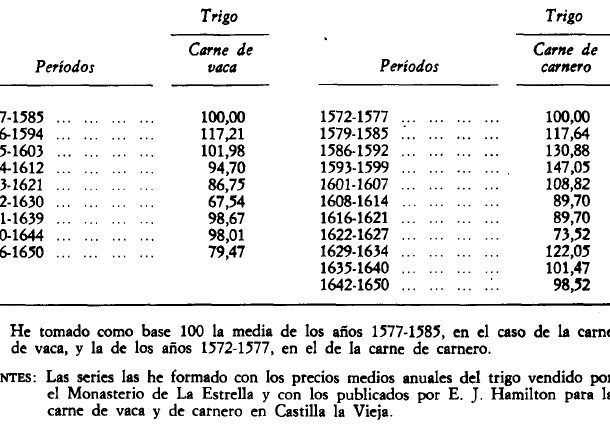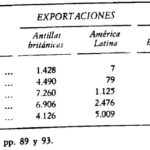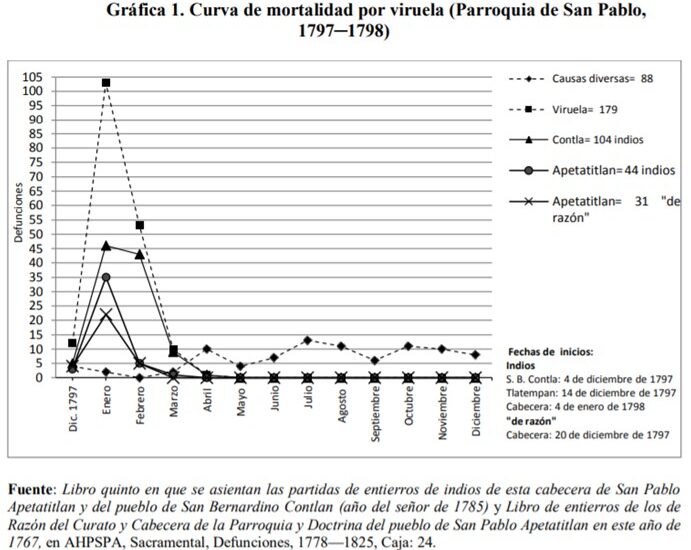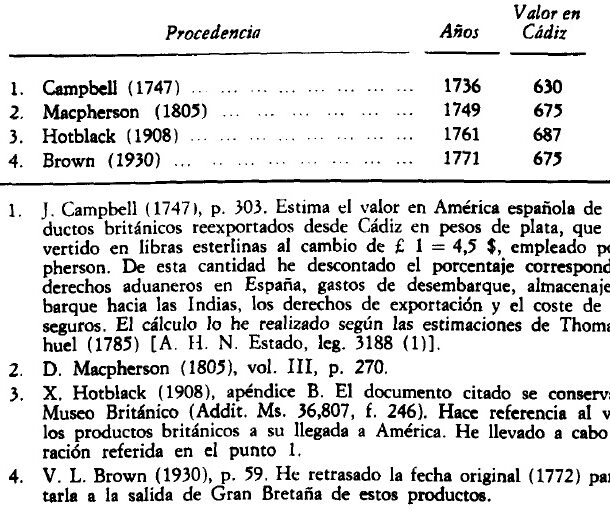
In the project of reconstructing Spanish foreign trade in the 18th and 19th centuries, one of the avenues to be explored is that provided by the foreign trade series of those countries linked to Spain. In this sense, Spanish-British trade leads to the study of centre-periphery relations in Europe, before, during and after the British Industrial Revolution. During the 18th century, British trade with Spanish America was considered illegal by the Spanish authorities despite the fact that it was carried out through Spain (from 1717-1778) exclusively via Cadiz or previously via Seville or from the British West Indies and Brazil. Between 1713 and 1739, illegal trade also took place under the cover of the asiento de negros, as well as commercial contacts via the South Sea Company’s ship of leave. The search for markets outside Europe led Britain to turn its attention to Latin America, as features of Anglo-Spanish-American trade existed prior to the formal break between the Spanish colonies and the Spanish mainland. However, several reasons have been put forward that could explain the process of British substitution of trade with Latin America through Spain by direct traffic: the protectionist policy of Charles III may have had a dissuasive effect on British traders; the high opportunity cost represented in England at the end of the 18th century by the immobilisation of capital; the reduction in the cost of maritime transport from Britain to the West Indies or the establishment of free ports in 1766, whose purpose was to legitimise and promote trade between the British West Indies and the colonies of other countries, especially those of Spain. Until the beginning of direct traffic between the British Isles and Latin America in the early years of the 19th century, British exports to its West Indies colonies increased fivefold in twenty years, while imports tripled. Data for Dominica, Grenada, Jamaica and the Bahamas between 1788-1795 show an annual average of 486 ships carrying 16,252 long tons for imports from the Spanish colonies and 481 ships carrying 14,339 tons for exports.
Collection: Statistics
Project: 2. Social and economic impact of technological revolutions in Europe., 9. Travels and travelers: economic, social and cultural connections.
Chronology: XVIII, XIX
Scope: Secondary Education, Baccalaureate, University
Resource type: Statistics
Format: Table
Source: Prados de la escosura, Leandro, «El comercio hispano–británico en los siglos XVIII y XIX: I. Reconstrucción» Revista de Historia Económica, Journal of Iberian and Latin American Economic History, 2, 2 (1984), pp. 113–162.
Language: Spanish
Date: 1984
Owner: Álvaro Romero González (Modernalia)
Copyright: © Leandro Prados de la Escosura, © Revista de Historia Económica
Abstract: Import and export ratios between British trade and its colonies in the 18th century
Image
Tags







